Type a search term to find related articles by LIMS subject matter experts gathered from the most trusted and dynamic collaboration tools in the laboratory informatics industry.
Communist Party of India (Marxist–Leninist) Liberation | |
|---|---|
 | |
| Abbreviation | CPI(ML), CPI-ML, CPIML(L), CPI-ML(L), CPIML Liberation |
| General Secretary | Dipankar Bhattacharya |
| Founder | Subrata Dutta Vinod Mishra |
| Founded | 1974 |
| Preceded by | Communist Party of India (Marxist–Leninist) |
| Headquarters | Charu Bhawan, U-90, Shakarpur, Delhi-110092 |
| Newspaper | Liberation (English)[1] Deshabrati (Bengali)[2] |
| Student wing | All India Students Association |
| Youth wing | Revolutionary Youth Association |
| Women's wing | All India Progressive Women's Association |
| Labour wing |
|
| Peasant's wing | All India Kisan Mahasabha |
| Ideology | |
| Political position | Far-left |
| Colours | Red |
| ECI Status | State Party[4] |
| Alliance | I.N.D.I.A (National) Mahagathbandhan (Bihar) Mahagathbandhan (Jharkhand) |
| Seats in Lok Sabha | 2 / 543 |
| Seats in Rajya Sabha | 0 / 245 |
| Seats in Bihar Legislative Assembly | 11 / 243 |
| Seats in Jharkhand Legislative Assembly | 2 / 81 |
| Number of states and union territories in government | 1 / 31 |
| Election symbol | |
 | |
| Party flag | |
 | |
| Website | |
| cpiml | |
| Part of a series on |
| Communist parties |
|---|
| Part of a series on |
| Communism in India |
|---|
 |
|
|
The Communist Party of India (Marxist–Leninist) Liberation (CPI(ML)L) is a communist political party in India.[5] The party is represented in Bihar and Jharkhand Legislative Assemblies. Since 2023, the party is also a member of the INDIA electoral alliance.[6] In Bihar, the party has significant base amongst the Extremely Backward Castes and the Schedule Castes. It was successful in mobilising Upper Backward Caste groups such as Koeris in some districts of central Bihar, prior to the rise of Lalu Prasad Yadav. The party faced existential crisis when a large section of its Koeri and Yadav support base defected to Rashtriya Janata Dal in 1990s. However, the ideological commitment of its cadre protected it from disintegration.[7] It staged a comeback in politics after winning twelve seats in Bihar Legislative Assembly in 2020 and by sending two of its members to Lok Sabha in 2024 Indian general elections.[8]
In 1973, the original Communist Party of India (Marxist–Leninist) split, with one group led by Sharma and another by Mahadev Mukherjee. Vinod Mishra initially belonged to Mukherjee's party, but he and the Burdwan Regional Committee broke with Mukherjee in September 1973. Mishra sought contact with the Sharma group, but the Burdwan Regional Committee was later divided and Mishra denounced the political line of Sharma (a critique, which amongst other things, called for the formation of open mass organizations, a move that almost constituted a heresy in the CPI (ML) movement at the time).[9]
In 1974, Mishra came into contact with Subrata Dutta (Jauhar), a leader of armed struggle in the plain areas of Bihar. On 28 July 1974 (the second death anniversary of Charu Majumdar), a new party Central Committee was formed with Jauhar as General Secretary and Mishra and Swadesh Bhattacharya (Raghu) as members.[9] The reorganized party became known as the 'anti-Lin Biao' group (whilst the faction of Mahadev Mukherjee constituted the 'pro-Lin Biao' group).[10] The anti-Lin Biao group became known as the CPIML Liberation.[11]
Mishra served as West Bengal secretary of the new party organization. Under Mishra's leadership new dalams (guerilla squads) were formed.
In November 1975, Jauhar was killed during Lal Sena activities. Mishra became the new party General Secretary in a reorganized five-member Central Committee. Mishra organized a second party congress, held clandestinely in the rural areas of Gaya district in February 1976. The congress unanimously re-elected Mishra as General Secretary.[9]
Mishra was the political architect of the process of re-orientation of CPIML Liberation.[9] By 1976 the party had adopted a position that armed struggle would be combined with building a broad anti-Congress democratic front movement.[11] The process was further elaborated through an internal rectification process initiated in late 1977. Party study circles and party schools were started from central to the block level of the party structure. The theory of two line tactics started to develop.
In 1981, the party tried to unify the other splintered ML factions. The party organised a unity meeting with 13 ML factions to form a unified leading core. However, the initiative was a failure.
In the early 1980s, CPIML Liberation began building an open non-party mass movement (in direct to the original policy of CPI (ML)), the Indian People's Front (founded in April 1982). Nagbhushan Patnaik became the president of IPF. The construction of IPF, through which the underground party could develop links to other democratic forces on the basis of a popular, democratic and patriotic programme, was based on interventions by Mishra.[9] However, although Mishra broke with the dogmas of the early CPI (ML), he never renounced Charu Majumdar's legacy.[10]
In the third party congress, it was decided that IPF will participate in parliamentary elections. In 1989, IPF's Rameshwar Prasad won the loksabha seat from Ara (Bhojpur). In 1990, IPF won seven seats from Bihar Legislative Assembly. Special initiatives taken for restructuring the party and open up. IPF hold its first rally on 8 October 1990 in Delhi.
CPIML's mass base in the state of Bihar was among the members of Extremely Backward and Schedule Castes and it was initially unable to draw support for its activities from the upper backward castes. It was, however successful in mobilising the Koeris in the regions like Arrah, Rohtas, Patna and Aurangabad. This success remained temporary as with the formation of Rashtriya Janata Dal, the Koeri and Yadav support base of CPIML increasingly shifted its loyalty to the RJD. This was because plum posts in the party was offered by RJD to those detecting from the CPIML. During this period four legislators associated with Indian People's Front, the open mass organisation of CPIML defected to the RJD. These were Shri Bhagwan Singh Kushwaha, K.D Yadav, Umesh Singh and Suryadev Singh. However, the party was saved from complete ruin by the presence of top leadership which was ideologically committed and belonged to social groups such as non -Yadav Other Backward Castes.[7]
In 1985, the party launched People's democratic Front (PDF) in Karbi Anglong district of Assam which won a seat in state assembly. In 1987 PDF was transformed to Autonomous State Demand Committee (ASDC). A sustained mass movement by ASDC help it to sweep district council elections in 1989. In 1981, ASDC's Jayanta Rongpi became an MP in Parliament. In 1996, ASDC was able to send its five-member group in Assam assembly as MLA.
In 1992, after the Fifth party congress (Held in Kolkata), the party comes out in the open from its underground status.[5] Mishra was re-elected General Secretary of the party at the sixth congress of CPIML Liberation in Varanasi in October 1997.[9]
The CPIML(Liberation), led by Dipankar Bhattacharya is a surviving faction of the CPIML.[12] Liberation has established legal overground structures (trade unions, student groups, peasant organisations etc.) and participates in elections. In the Lok Sabha elections in 1999 the party won 0.3% of the votes and one seat (the former ASDC-seat from Assam). In the 2004 elections the seat was lost, mainly due to a split within ASDC. As of 2016, the party has been able to send its representatives to the state legislative assemblies of Bihar and Jharkhand as well as the panchayats of Bihar, Jharkhand, Uttar Pradesh, West Bengal, and Punjab.
In November 2020, it won 12 seats in Bihar's election.[13] The legislators elected in this election to Bihar Legislative Assembly are:
In 2024, it was able to win two seats in from Bihar in Indian general election. The CPIMLL candidates, Raja Ram Singh Kushwaha and Sudama Prasad were able to defeat union minister R. K. Singh in Arrah Lok Sabha constituency and Upendra Kushwaha and Bhojpuri singer and actor Pawan Singh in Karakat Lok Sabha constituency. In a report, Dainik Bhaskar stated that the party is more strong than Indian National Congress in the state of Bihar, given its stellar performance in 2020 Bihar Legislative Assembly elections and 2024 Indian general elections. The party has supported the government of Nitish Kumar and Tejaswi Yadav from outside after 2020 Bihar Legislative Assembly election, however, its face has always been of a mass organisation working for the cause of poor. Many a times, it was seen protesting against its own government outside and inside the house of legislative assembly. The party was also praised for its ground level work amongst the downtrodden section of society and for winning the elections with bare minimum resources, when other political parties relied on heavy funding from the corporate for their election expenses.[14][8]
CPIMLL has also showed significant presence in the regions such as Siwan and has been at the forefront in the fight against local landed magnates on the question of poor. It came into conflict with the gangster politician Mohammad Shahabuddin in the region, who was supported by local feudal elements. The Party has been served in the region by the influential local leaders such Ramesh Singh Kushwaha.[15]
The English-language publication of the party is Liberation, and thus the party is called CPIML Liberation. Apart from Liberation, the party publishes a central Hindi weekly organ, Samkaleen Lokyuddh. Some state party committees publish their own organs, like the weekly Ajker Deshabrati in West Bengal, Nabasphulinga in Tripura, Teeppori in Tamil Nadu, Telugu Liberation in Andhra Pradesh, Kannada Liberation in Karnataka, Samkali Lok Morcha in Punjab, etc.[16][17]
The party has a longstanding conflict with the feudal landlords since the beginning of CPI (ML). Siwan, Bhojpur, Arrah are the strongholds of CPI (ML) movement.[18] The communist movement in Bihar was founded by the comrade Jagdish Mahto, Rameshwar Ahir and Ramnaresh Ram in the Ekwaari village of Bhojpur.[19] Traditionally, CPIML had a strong base between Kushwahas and Dalits of Bihar.[20]
CPIML Liberation emerged as the third largest party in Bihar Legislative Assembly Election 2015. The party contested jointly along with CPI, CPI(M), RSP, Forward Bloc, and SUCI(C) as a third alternative to the National Democratic Alliance and the Mahagathbandhan of Lalu Prasad Yadav and Nitish Kumar. The party won the seats of Darauli, Balrampur and Tarari each. The party has a vote percentage of 1.5% in the state. All the left parties together have a vote percentage of 3.59%.[21]

CPI(ML) Liberation contested the 2020 Bihar Legislative Assembly election as part of the Mahagathbandhan, an alliance of the UPA and the leftist parties led by the Rashtriya Janata Dal. The party secured 12 seats with a vote percentage of 3.16%, making it the fifth largest party in the Bihar Legislative Assembly.[22][23] However, the Mahagathbandhan lost the election to the rival National Democratic Alliance.[24]
As a result of the election, the CPI(ML)L was recognised as a state party by the Election Commission of India.[4]
Since the separation of Jharkhand from Bihar important places like Ranchi, Dhanbad, Giridih, Koderma, Jamtada and others have been field of work of the party. In Jharkhand the party is the representative of regional adivasis who have conflicts with corporates and government against improper land seizure without proper rehabilitation. The party also has conflicts with the local coal mafias.[25]

The party contested in cooperation with state left parties like Marxist Co-ordination Committee (MCC), CPI, and CPI(M) as an alternative to the BJP and INC led alliances. The party won the Dhanwar seat.[26] The party got 1.5% of vote in the state. All the left parties together got 2.5% vote in the state.
The party gained the legislative assembly seat of Bagodar[27] but lost the previous seat from Dhanwar.
The current general secretary of the party is Dipankar Bhattacharya, first elected in 1998 after the passing of Vinod Mishra. The 11th party congress of CPIML Liberation, held in Patna, Bihar from 15 to 20 February 2023 elected a Central Committee with 77 members. The Central Committee later elected a 17 numbers of Politburo members Committee.[28][29]
| No. | Name |
|---|---|
| 1 | Dipankar Bhattacharya |
| 2 | Swadesh Bhattacharya |
| 3 | Kartik Paul |
| 4 | Ramji Rai |
| 5 | Amar |
| 6 | Kunal |
| 7 | Dhirendra Jha |
| 8 | Janardan Prasad |
| 9 | Manoj Bhakt |
| 10 | Shankar V |
| 11 | Rajaram Singh |
| 12 | Vinod Singh |
| 13 | Meena Tiwari |
| 14 | Abhijit Mazumdar |
| 15 | Shashi Yadav |
| 16 | Sanjay Sharma |
| 17 | Ravi Rai |
| No. | Name | Tenure |
|---|---|---|
| 1st | Subrata Dutta | 1974–1975 |
| 2nd | Vinod Mishra | 1975–1998 |
| 3rd | Dipankar Bhattacharya | 1998–incumbent |
| Election Year | Overall votes | % of overall votes | seats contested | seats won | +/- in seats | +/- in vote share |
|---|---|---|---|---|---|---|
| Bihar Legislative Assembly | ||||||
| 2015 | 587,701 | 1.54% | 98 | 3 / 243
|
||
| 2020 | 1,333,682 | 3.16% | 19 | 12 / 243
|
||
| Jharkhand Legislative Assembly | ||||||
| 2005 | 2.46% | 28 | 1 / 81
|
|||
| 2009 | 241,436 | 2.35% | 33 | 1 / 81
|
||
| 2014 | 210,446 | 1.52% | 39 | 1 / 81
|
||
| 2019 | 172,475 | 1.15% | 1 / 81
|
|||
| Lok Sabha | ||||||
| 2009 | 1,044,510 | 0.25% | 0 / 543
|
|||
| 2014 | 1,007,275 | 0.18% | 0 / 543
|
|||
| 2019 | 711,715 | 0.12% | 0 / 543
|
|||
| 2024 | 1,726,309 | 2.99% | 4 | 2 / 543
|
||
| Members of Lok Sabha | ||||
|---|---|---|---|---|
| Year | Lok Sabha | Name | Constituency | Margin |
 |
13th Lok Sabha | Jayanta Rongpi |  |
1,04,864 |
 |
18th Lok Sabha |  |
59,808 | |
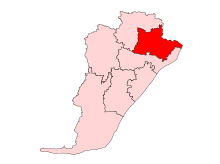 |
1,05,858 | |||
 | ||||
|---|---|---|---|---|
| 17th Bihar Assembly | ||||
| Year | Nos. | Name | Constituency | Margin |
 |
1. | Birendra Prasad Gupta |  |
2,302 |
| 2. |  |
 |
53,597 | |
| 3. |  |
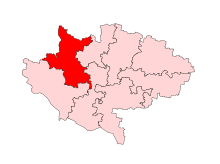 |
||
| 4. | 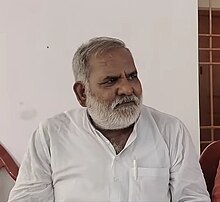 |
 |
12,119 | |
| 5. | Gopal Ravidas | 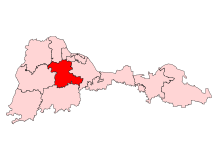 |
13,857 | |
| 6. | Sandeep Saurav | 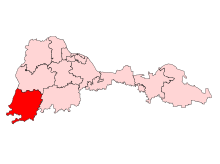 |
30,915 | |
| 7. |  |
 |
48,550 | |
| 8. | Shiv Prakash Ranjan | 29,835 | ||
| 2024 By-election | ||||
| 9. |  |
11,015 | ||
| 10. | ||||
| 2024 By-election | ||||
| 11. |  |
 |
||
| 12. |  |
 |
||
| 13. |  |
 |
||
| 14. |  |
 |
||
 | ||||
|---|---|---|---|---|
| 16th Bihar Assembly | ||||
| Year | Nos. | Name | Constituency | Margin |
 |
1. |  |
 |
|
| 2. |  |
 |
20,419 | |
| 6. |  |
|||
 | ||||
|---|---|---|---|---|
| 14th bihar Assembly | ||||
| Year | Nos. | Name | Constituency | Margin |
 |
1. | Amar Nath Yadav |  |
|
| 2. |  |
|||
| 3. |  |
 |
||
| 4. | ||||
| 5. | ||||
The main mass organizations of the party are: